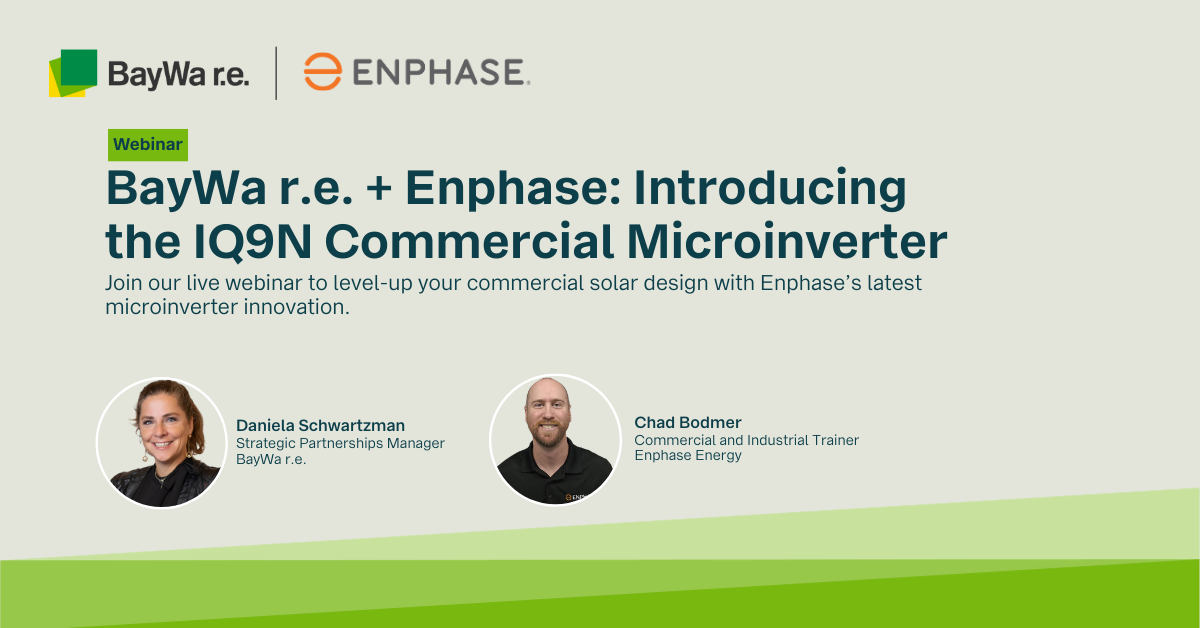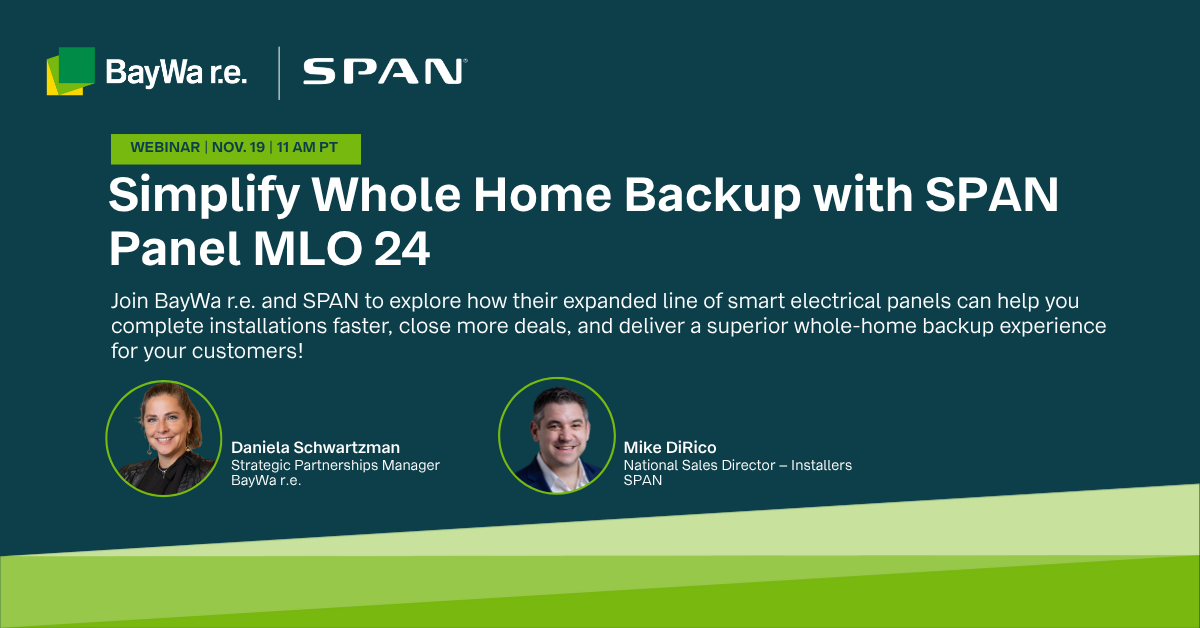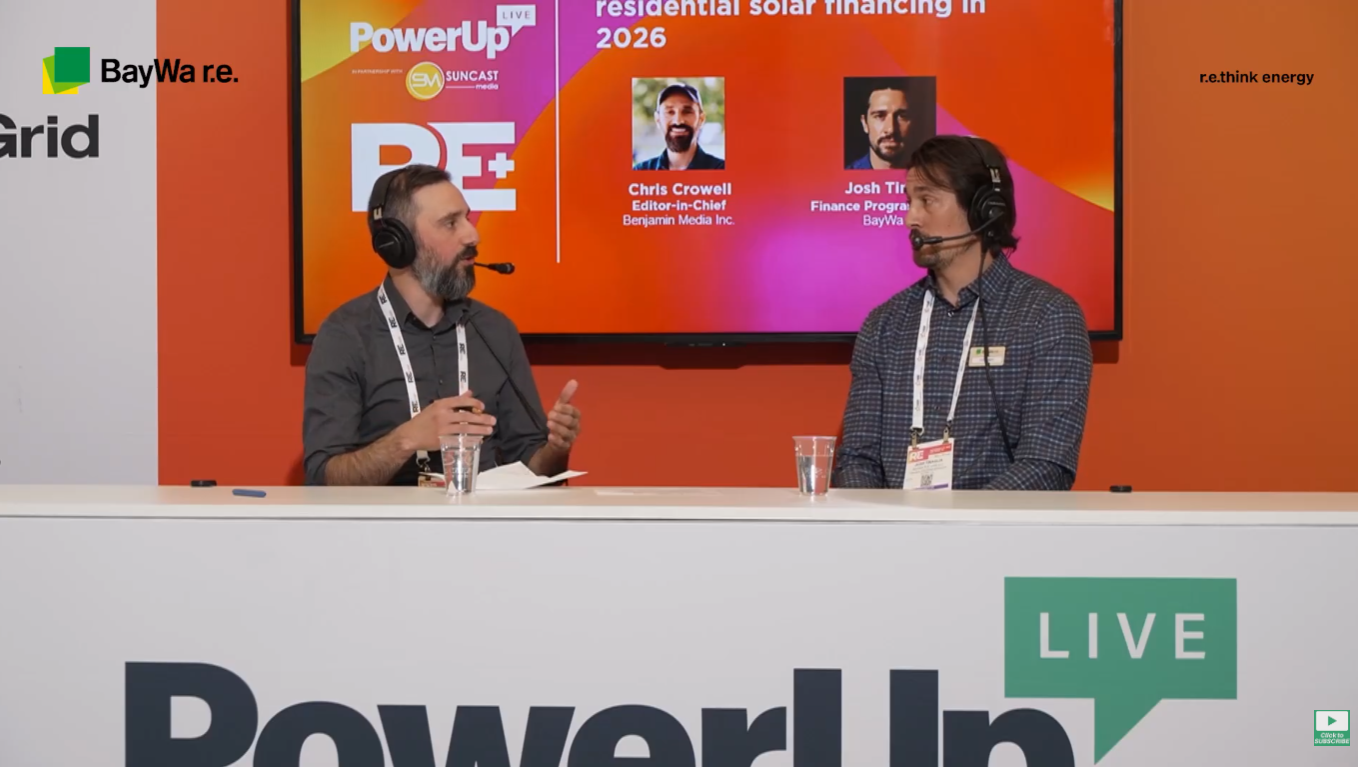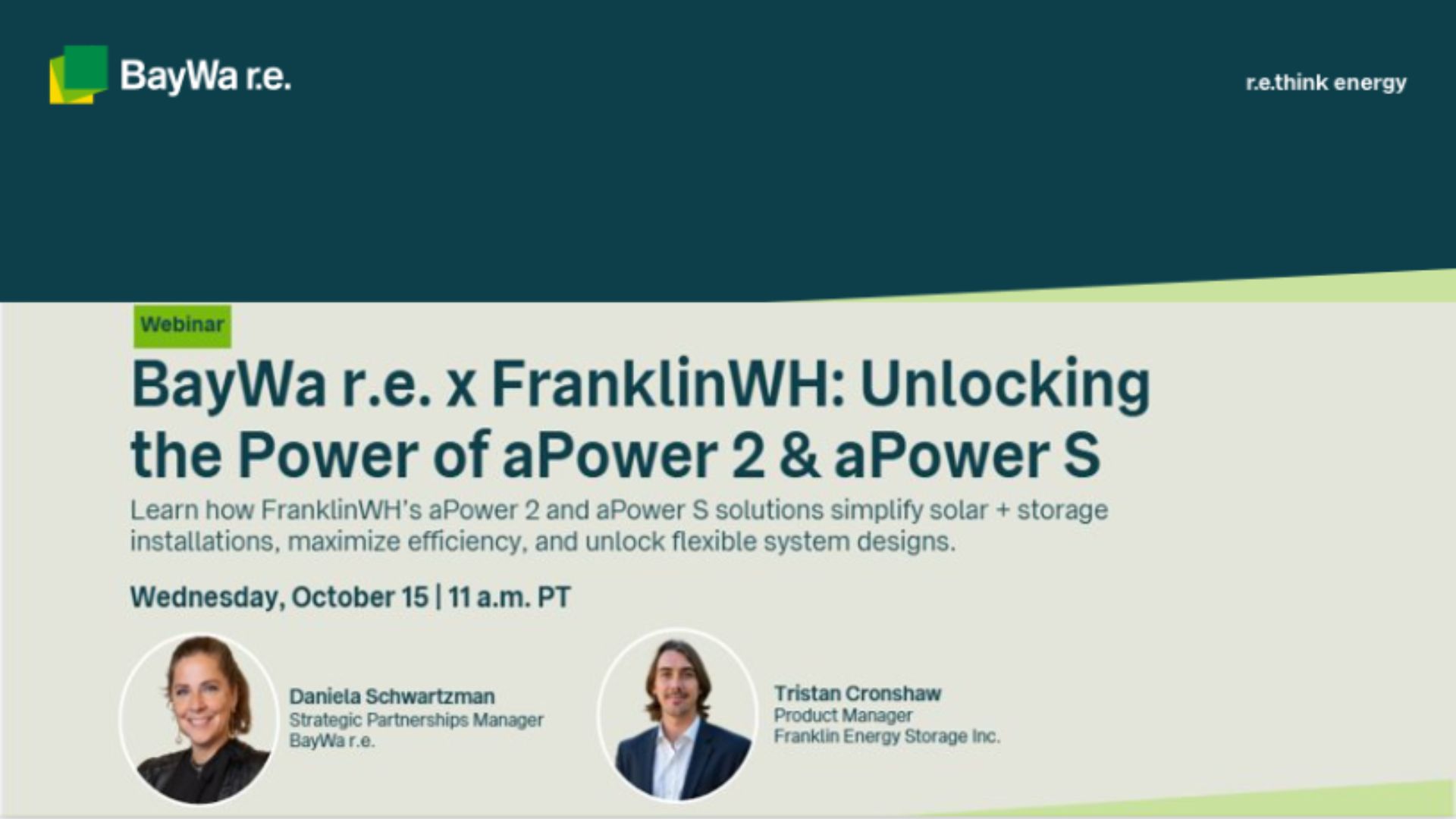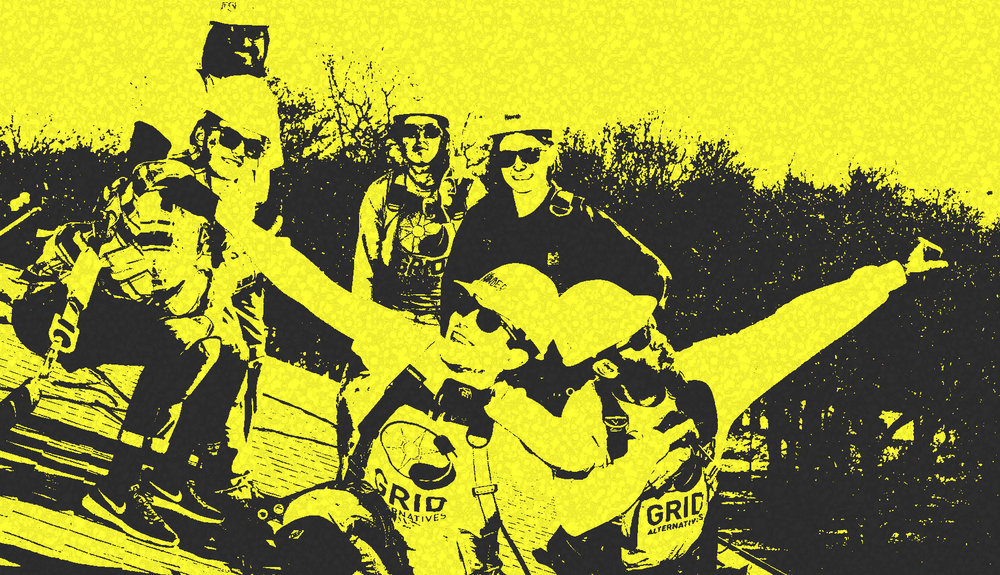 Illustration – Tom Miller, Photo – GRID Alternatives
Illustration – Tom Miller, Photo – GRID Alternatives
Danny Hom is GRID Alternatives’ communications lead in the Greater Los Angeles office, serving Los Angeles, Orange, and Ventura County. GRID Alternatives is the United States’ largest not-for-profit solar installer, founded in 2001 by Erica Mackie, P.E., and Tim Sears, P.E.
Editor’s note: This conversation has been edited for clarity and length.
Tom (Tom Miller – Creative Director, BayWa r.e. Solar Systems; Editor – Solar r.e.view): So tell me a bit about GRID. Who are you and what do you do?
Danny: The idea for GRID Alternatives is to do everything we can to create a clean energy revolution. For us, that involves pushing the ball forward on a few different fronts.
As a non-profit organization, we prioritize bringing solar to residents who can benefit the most from energy savings, but we also believe in identifying historically disadvantaged populations and making sure that people in those populations have access to trainings and other types of resources that will allow them to be part of the “green collar economy” and the solar hiring boom.
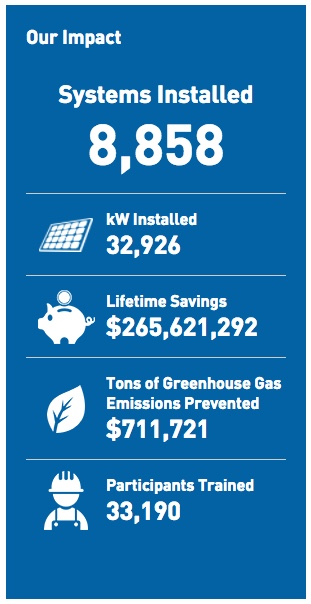
Illustration, GRID Alternatives
Tom: I looked over your stats and you’ve trained over 30,000 participants and installed almost 9,000 systems. Can you talk about the paths GRID participants take?
Danny: That’s accurate: 30,000+ individuals have been out on a rooftop with us. Many are trainees interested in employment and career opportunities in the industry, while others are volunteers who have decided to give back to the community through participation.
In terms of our trainees, there are different pathways for an aspiring solar professional to get involved depending on what kind of employment they want to pursue.
Nationwide, GRID has a resume bank where trainees who work with us can upload a resume. An interested hiring manager can reach out if the trainee’s experiences matches the employer’s needs. The resume bank is also useful internally. This allows us to keep track of an individual’s interests and help them go to another office somewhere else in the country—like our Mid-Atlantic office—and continue to build on their experiences as an installer.
GRID Alternatives takes a lot of pride and interest in workforce development on the individual level. So as individuals acquire dozens, hundreds, and (on rare occasions) even thousands of hours of experience on our installation projects, it becomes easier for a workforce development manager to connect that trainee with a company that is looking for, say, installers in a specific county.
Maybe an employer is looking to staff just one particular project. And we do connect plenty of individuals with job opportunity through requests from partnerships with major industry employers, mid-level regional companies, and local mom and pop installers. In the end, we want to ensure that there are viable careers at the end of the road for trainees who walk through our doors, and we’ve recently expanded our training offers to include Design Workshops and Internships, Conduit Bending and Electric Workshops, and Warehouse Management Internships.
Tom: And how many of those trainees go on to have full-time employment?
Danny: I focus my attention on Orange County, Los Angeles County, and Ventura County. And so far this year we’ve placed forty-nine individuals in employment. We hope to grow that number significantly and are looking forward to building out more connections with employers, which will make that possible. We’ve been able to connect about seventy people to jobs each year for the last three years, and we’ll surpass that in 2017.
Tom: If a contractor, and this could be anywhere in the US, is interested in supporting the type of work GRID is doing, can they connect with GRID directly to hire employees?
Danny: I think that’s definitely a wise choice. And that’s an option that employers in the Los Angeles region have been taking advantage of. I would certainly love to see more. That can happen directly, by building relationships with the workforce development staff here. And we also hold multiple hiring and informational events every year. We held a career fair in April with sixteen employers present. And we are always looking for employers to put out a table, or staff a booth, at one of those events and take their message directly to the people searching for that type of work.
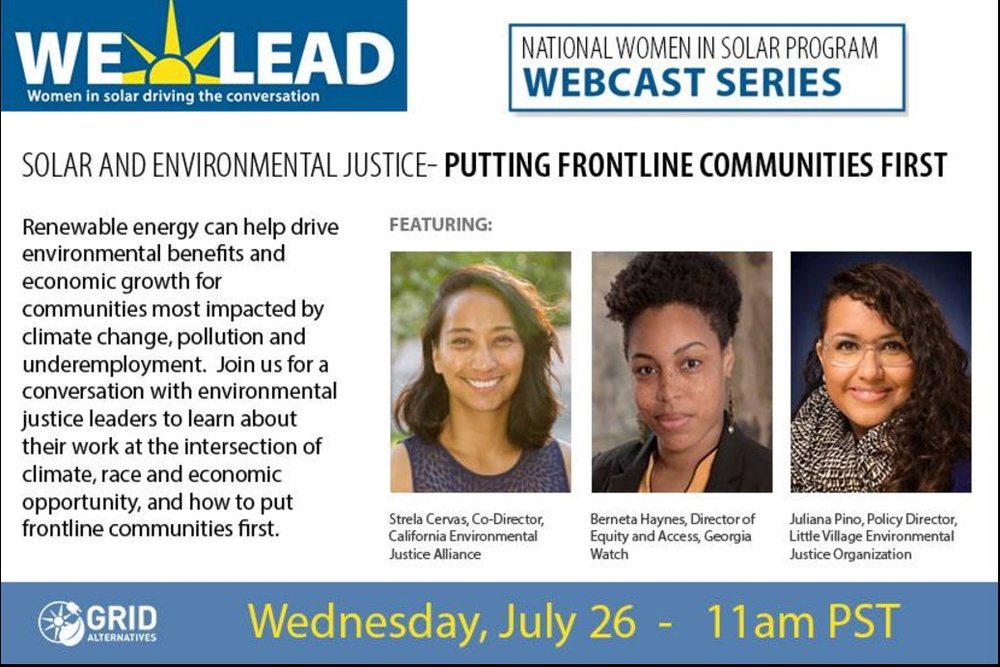
Photo, GRID Alternatives
Tom: I came across the WeLead podcast, which seems like a great series. You have three women of color on the first webinar. What are you trying to accomplish with this webinar and series of events?
Danny: The idea with this type of initiative is to make sure that the people who are only familiar with solar from the customer side realize the opportunities to do work in solar: as a professional in construction, or in design, or for those people just looking to pursue a social outcome through solar.
The WeLead podcast emphasizes that solar can be a vehicle for social and economic justice. The panelists will speak specifically to how clean energy work intersects with progress we’re seeing in racial equality and economic opportunities for disadvantaged communities—and in making sure that the planet is livable for everyone in the years ahead.
One of the driving forces for Wednesday’s podcast is to see more women involved in the solar industry, and we’re looking forward to having panelists who speak directly to the concerns of women and speak directly from their own experiences.
Tom: Can you speak to the role of diversity, when it comes to the volunteers, trainees, and the homeowners that GRID serves?
Danny: Our work is most successful when the Californians to whom we bring solar can see their own experiences reflected in the GRID Alternatives team. We occupy a unique space as a nonprofit solar installer who—as a part of our mission—works exclusively in disadvantaged communities. That really hones our focus and ensures that a homeowner that might be going solar with GRID can see that we share their concerns around helping them and their family.
Tom: Thinking about the solar installations that you do, how does a homeowner find out about GRID? How does GRID approach that homeowner? I guess, walk me through the lifecycle of a GRID install?
Danny: We’ve designated four criteria for going solar with our program—requirements that a homeowner needs to meet to receive a solar system at no cost.
First: to own and live in their home. Second: to live in an environmentally disadvantaged community, as determined by the CALEPA. The third criteria: to earn below area median area income (AMI). And the fourth criteria: to have a roof that is suitable for solar.
From there, our outreach team works with the homeowner to determine what their projections are, in terms of energy savings, and to build out a system that will balance all the different demands of the project. Our project management department plans inspections, works with the city and utility, creates a contract, and sets a date.
Tom: So when do the volunteers come into play? And when does the training happen? Are they integrated?
Danny: Good question. After the date of the install has been set, our workforce/volunteer team begins looking for interested individuals who would benefit from the experience of bringing solar to the particular community where we signed the contract.
In a lot of cases, we’ll make an arrangement with a partner organization to bring some trainees out as a group. We have strong partnerships with East Los Angeles Skill Center, which runs a solar program. We have strong partnerships with several community colleges in our area. We have a long-running partnership with Homeboy Industries, which is one of best-known organizations in the country for former gang members returning to the workforce and for formerly incarcerated individuals getting back into employment.

Photo, Homeboy Industries
Photo, Homeboy Industries
In other cases, we’ll open up our installation to any individual who is going through basic training with us and is interested in participating.
Tom: How do you decide who works on a project?
Danny: It’s a case-by-case process. In a lot of cases, we’re interested in where the volunteer trainees themselves are based. So, for example, we try and match volunteers who live in South Los Angeles and have them install solar in South Los Angeles. Trainees from our formal GRID partners get priority on installations due to the capacity we have. General volunteers and trainees from informal partners are able to sign up for any available project, using our online portal.
Tom: So ideally, the trainees work in their hometown or neighborhood?
Danny: Absolutely. And that doubles down on the emphasis we maintain on having our homeowners see their life experiences reflected in the GRID Alternatives’ team.
Tom: Do you only install projects in low-income communities?
Danny: Yes. As part of our mission, we’re interested in bringing solar to those who can benefit the most in the immediate-term. All of our residential single-family installs take place in underserved and in low-income communities. And we’ve recently amped up our work on multi-family installations. And we’re more than halfway done with a major project in a low-income community in Orange County.
Tom: I want to come back to that, but real quick: how are these projects financed? I see you have a lot of partners.
Danny: We leverage a mix of local and state funding to help people go solar. We also pursue funding through foundation grants, donations from private individuals, and strong relationships around equipment donations.
Tom: The low-income market is often overlooked by a lot of solar contractors. But if a contractor is interested in approaching a lower-income market, what kind of conversations would be most helpful for the contractor and the end-user?
For context to my question: for a lot of middle and upper-income residents, solar is often sold as an investment. The investment angle is still a great one with lower-income residents, but I think stability might also be a part of that conversation? The impacts of a lost job or a car dying can be huge factors, and having stability in energy costs could be a big benefit. So what topics might a contractor be talking about with low-income customers?
Danny: It’s a great question. I’ll take a stab at answering. The GRID Alternatives nonprofit model was established in the wake of the California energy crisis in the early 2000s. So baked into our DNA is an awareness that many low-income communities in California feel strongly about the need for stability in their utility bills.
I would encourage solar installers of any stripe to approach people with the argument that solar power offers them a clean and endless source of energy that doesn’t fluctuate based on market price.
I would also steer solar installers toward the GRID Alternatives model of establishing trust with the homeowner.
When we’re working with low-income populations, we’re aware that many of our clients treat their home as their most valuable asset. So they need to feel that the company they’re working with is bringing them safe solar and is going to fulfill every promise that we’ve made to their family. And also that we’ll be there to follow up about any concerns they have about the system.
It remains a challenge for any organization to help people who are not familiar with solar get to know the benefits—whether those benefits are economic or environmental.
Finally, in the communities in which we work—which have been designated as environmentally disadvantaged—we are also able to explain our mission of moving toward a renewable energy future in a way that resonates with homeowners.
Tom: The trust aspect is an important piece of that. Do you have any suggestions for how to build that trust? What kind of community outreach might be advantageous?
Danny: Our homeowners are looking to us—not just to walk them through the process of getting panels and modules—but they’re looking to us to help them navigate a system that may not be understandable to everyone.
In California, that includes the state framework of rebates. They want to know that a GRID Alternatives outreach coordinator can provide them information about electric vehicle rebates, or information about upcoming job and training opportunities. So we think of ourselves as being solar professionals, but also providing services that go beyond solar.
Tom: Paint a picture of the GRID network around the country—you’re pretty big.
Danny: GRID Alternatives operates a national umbrella organization, with a headquarters team in Oakland, plus a number of regional offices spread throughout California and around the country.
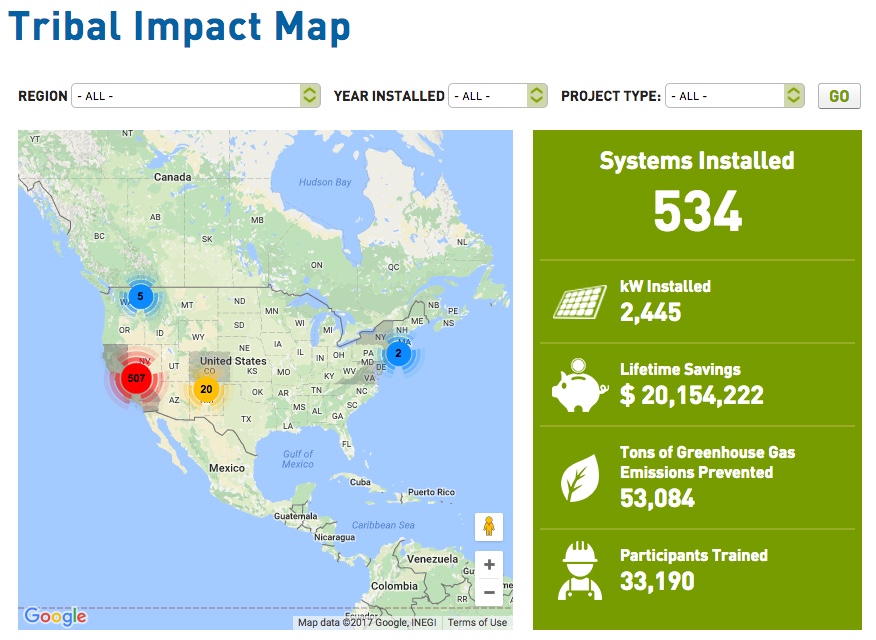
Illustration – GRID Alternatives
The two other organizations operated with the GRID name and model are our Tribal Program—which is based out of Colorado, and serves native communities throughout the western United States—and the GRID Alternatives international program, which brings solar to communities in Nicaragua and Nepal.
Tom: The other program I was interested in is the MPower Refugees Initiatives. Can you quickly tell me about that?
Danny: We’re always looking to expand opportunities for people to find their place in the new energy economy. And so a natural opportunity for us was to give refugees a chance to better their communities.
For our installations, no prior installation experience or construction experience is required. So refugees in the San Diego area—through GETCHARGEDUP—were interested in getting involved in solar and training for a possible future in the energy industry.
Tom: So this is an example where GRID worked with a local partner organization?
Danny: Exactly. The youth trainees took a 240-hour training program, which gave them paid opportunities to get several OSHA certifications and learn a variety of related skills.
Tom: You also partner with Homeboy Industries, an organization that specializes in formerly incarcerated people?
Danny: Yes. GRID Alternatives prioritizes working with returning citizens because, for us, the transition to a renewable energy economy won’t be complete until everyone has the opportunity to apply for these jobs.
What we often find, in practice, is that individuals who were recently incarcerated are returning to the workforce without key skills. Some of these skills are related to the solar industry, but many of the skills—such as interview skills—are lacking because they didn’t have the opportunity to maintain their strengths when they were incarcerated.
So we prioritize a framework and support network to get these individuals hands-on experience working in solar and also get them coaching that will lead them to, hopefully, full-time employment.
We often find that individuals who are returning citizens are incredibly motivated to use the time ahead of them. But it’s true that a lot of individuals can have a rocky road. And GRID Alternatives is there to support them on that path.
The GRID-Homeboy partnership is scalable, and we feel it should be a model for other organizations because it capitalizes on the strengths of each partner. HBI is able to identify individuals and provide them soft skills, counseling, and other support services while they train. Those individuals get classroom exposure to solar theory through a third partner, East L.A. Skills Center, and simultaneously have hands-on training with GRID.
Tom: Does GRID see themselves as a competitor to other solar installers?
Danny: No. In fact, you can find at least one former GRID trainee or volunteer in many of the private sector solar companies out there today, and we’re proud of that. For GRID Alternatives, workforce development is such an important part of our day-to-day work that we view other organizations as opportunities to bring good jobs to good people. That’s the outlook that takes precedence.
There are a lot of great companies out there and we’re looking forward to bringing those companies a new generation of employees.
Tom: You mentioned before that GRID is about a revolution that includes everyone. Do you think there’s something about the solar industry that makes it different from other industries?
Danny: In our experience, the solar industry is full of people who are willing to think outside the box. And one of the areas that extends to, is hiring.
Solar is a relatively new American industry, and solar industry executives have the opportunity to shape their workforce in a way that prioritizes justice for all Americans.
So we think of ourselves as being unconstrained by a lot of the factors that exist in older, more traditional industries. And we’re looking forward to also seeing solar professionals take the initiative and partner with GRID Alternatives for training, hiring, funding—because we believe in this idea of a renewable energy revolution that includes everyone. It’s not just simply limited to GRID.
Tom: Those are all my questions! Thanks for taking the time.
Danny: No problem. Thank you!
